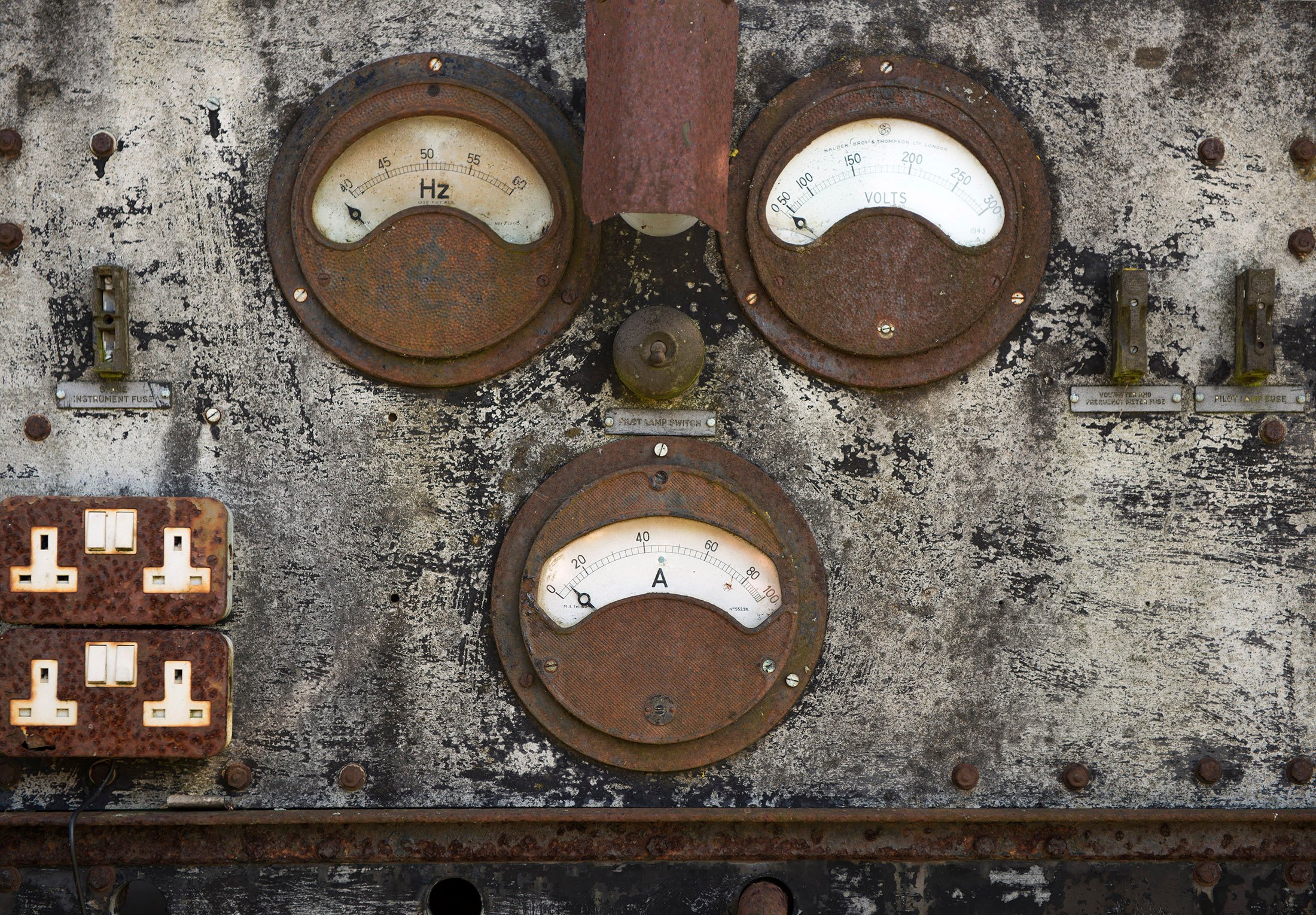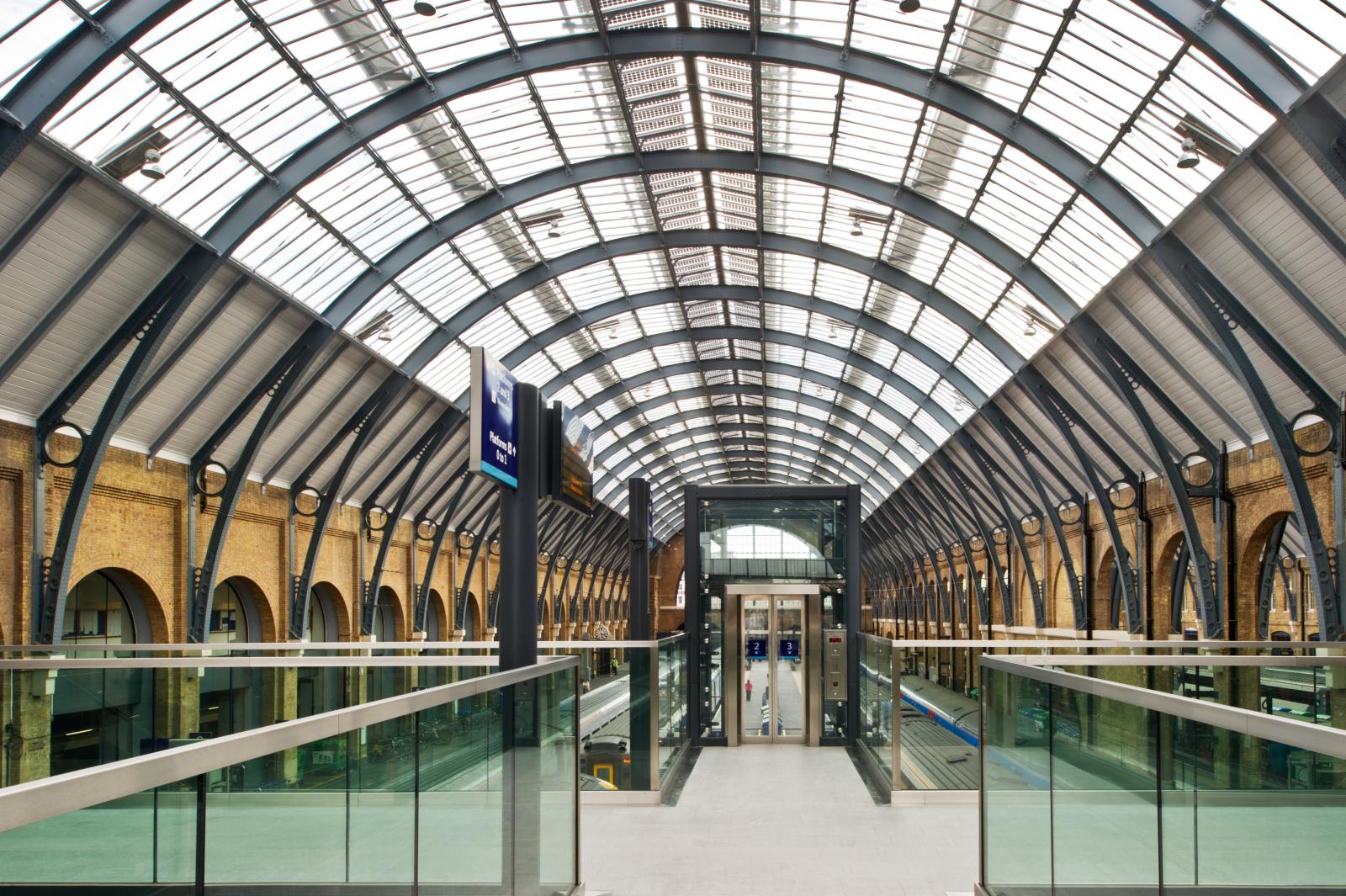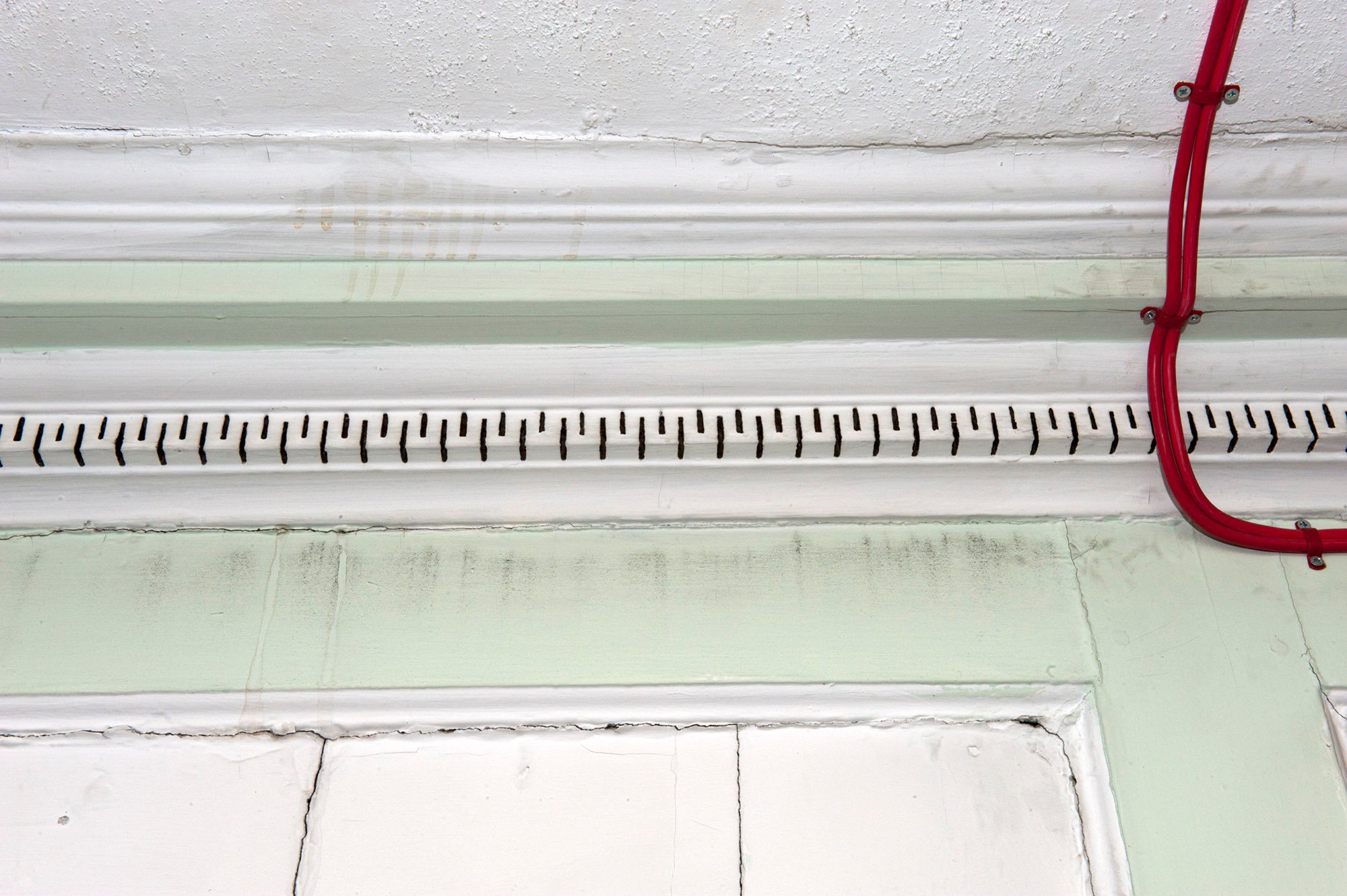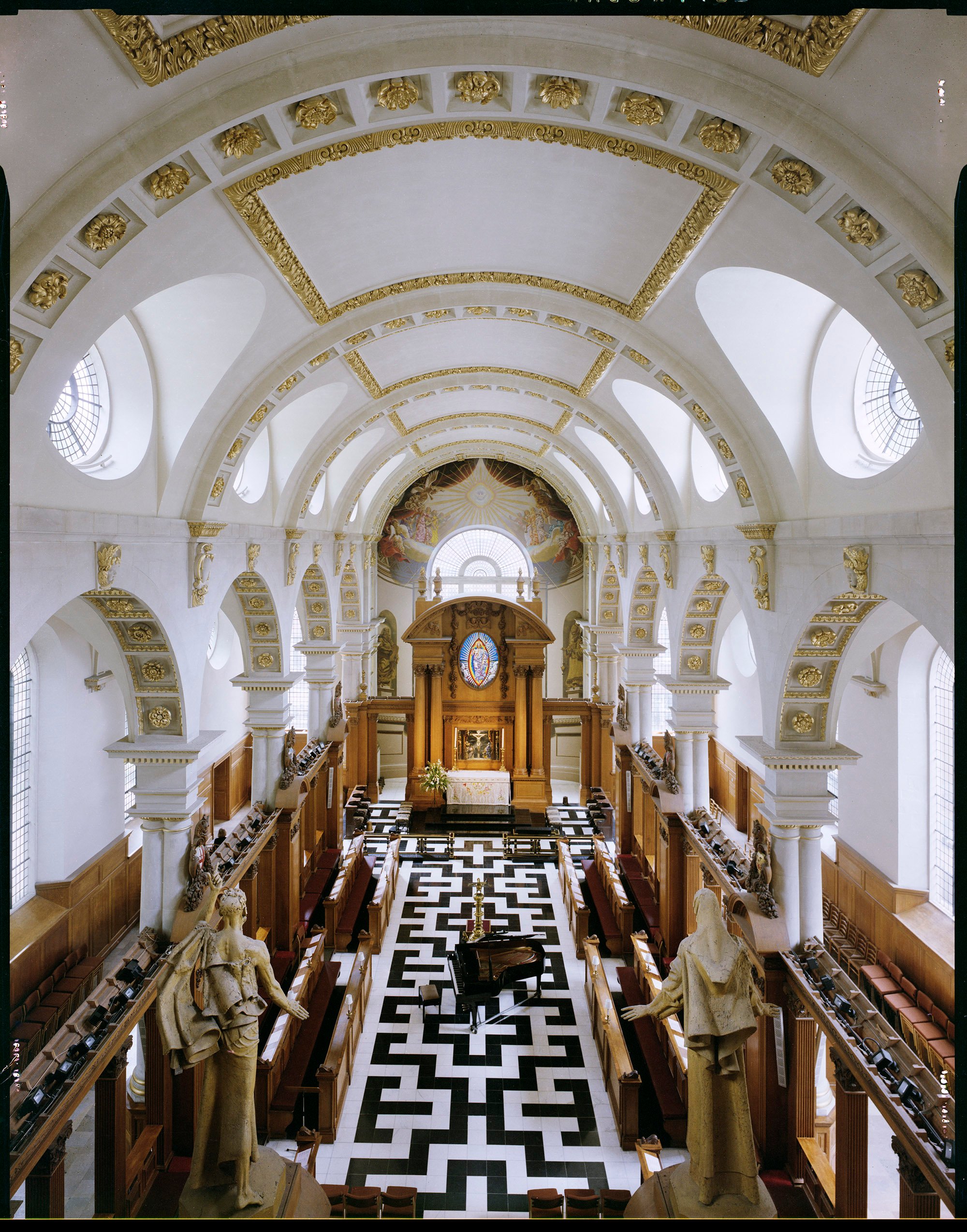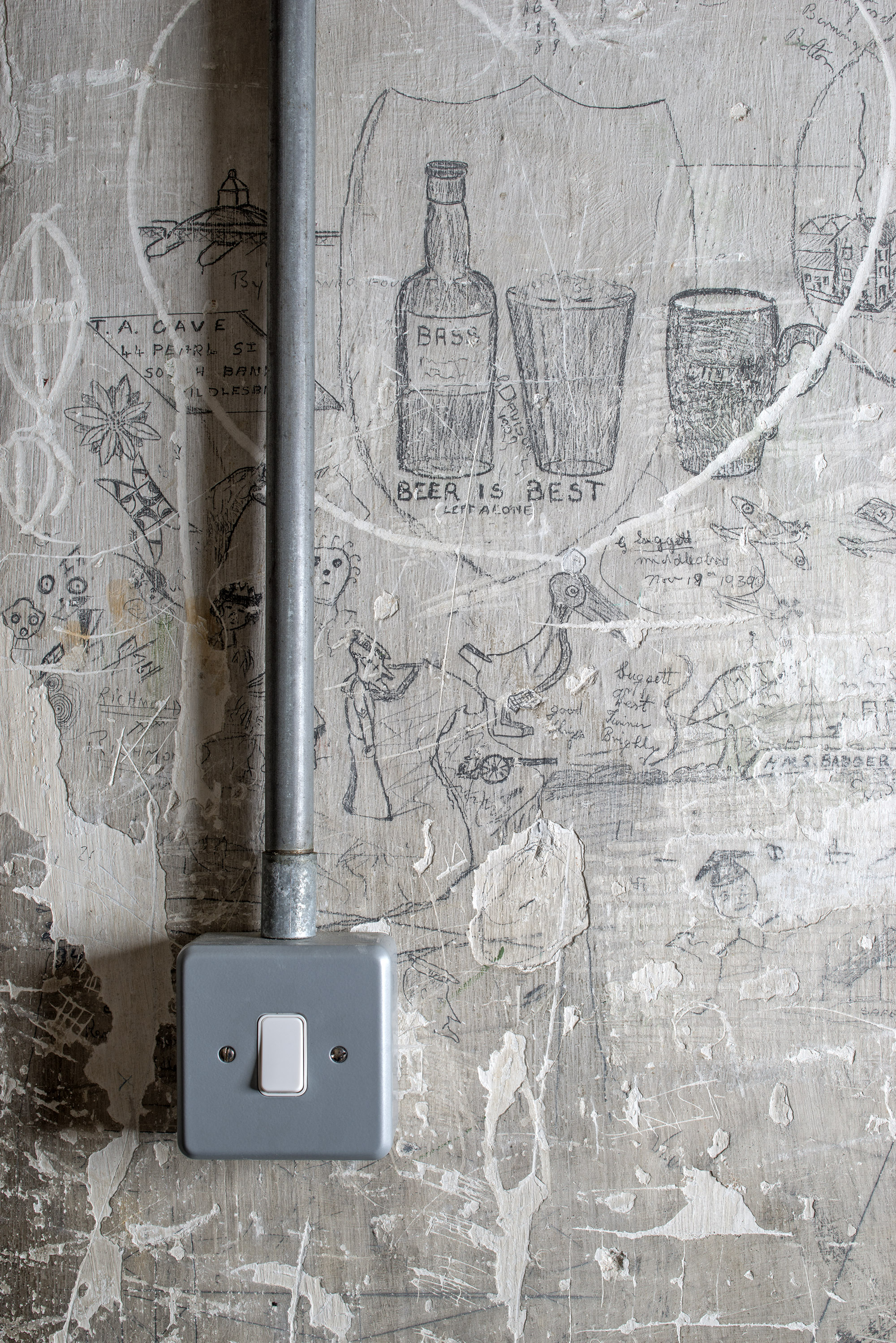Installing New Services
In older buildings it's important that the lighting, power and heating systems remain safe, efficient and suit the current use.
When building uses change, or services come to the end of their life, they will need to be replaced. The removal and replacement must be done in a way that limits damage to the historic fabric of the building.
There's a much wider range of building services in use today than in the past. They include mechanical, electrical and plumbing or public health engineering (sometimes referred to as MEP):
- Communication lines, telephones and IT networks (ICT)
- Gas, electricity, water
- Heating, ventilation and air conditioning (HVAC)
- Lightning and surge protection
- Electrical power systems, distribution boards and switchgear
- Internal and external lighting, including emergency lighting
- Hot and cold water systems
- Drainage, plumbing, and sewers
- Escalators and lifts
- Fire detection and protection
- Security and alarm systems
- Renewable or low-carbon technology installations, such as solar arrays
Conservation principles and reversibility
The design and installation of building services systems in historic buildings need to be considered carefully. Successive installations can undermine a building's historic interest.
The design and installation should aim to protect the building and its setting with no loss of historic fabric, and follow the principles of mitigation, minimisation, and reversibility.
Mitigation considers:
- Reusing of existing services’ routes
- Using existing features, such as mouldings or balustrades, to conceal services such as pipework and cabling
- Using alternative routes for services through voids under floors or above ceilings
- Locating discretely new or additional items where their function is not compromised
- Using wireless technology for controls that remove the need for hard-wired connections. However, the heavy construction found in some historical buildings may limit the range, and detailed signal strength surveys may be required
- Choosing accessible service routes and locations to easily allow future maintenance, repair and eventual replacement
Minimisation considers:
- Reducing or, better still, removing completely the likelihood of any permanent alterations or scarring to a building, especially those caused by installing heating services
- Sharing common routes with other services
- Allowing spare capacity in (new) service routes for future works
- Routeing pipework, controls or cabling through buildings in ways that might not be the shortest, the most direct, or the simplest
- Using the minimum number of fixings in historic fabric
- Reducing the impact on historic fabric by making fixings into mortar joints between brickwork, stonework or where least visible
- Carrying out the minimum amount of work that would disturb existing fabric and, where this is necessary, re-using as much as possible of the existing fabric as is appropriate and practical
- Avoiding destructive chasing or cutting a groove into a surface to install cables or pipes
- Installing services so that they don’t cover up, damage, or interrupt views of important building features and surfaces or create dirt traps or staining patterns from heat and air movement
Reversibility considers:
- Planning for the removal of services at the end of their useful life as well as their installation, both to reduce the harm that could be done to historic fabric
- Detailing each intervention, such as holes and fixings, and noting that fixings into mortar joints (which can be repaired by repointing) may be more appropriate than into brickwork or masonry, which cannot be so readily repaired
- The difficulty of installing and eventually removing large items due to their size
Historic England’s conservation principles provide further general guidance.
Condition surveys and investigations
When replacing or installing new building services, or planning a maintenance programme, the first step is a thorough survey of the existing services.
The survey should include an assessment of the size, capacity and present loadings of the existing utility incoming services, as well as existing heating boilers, cooling plant, ventilation fans, air handling, electrical panels and switchgear and equipment.
Survey work should be non-destructive and not involve any cutting, removal of building fabric or finishes, lifting of floors, coverings or on-site digging. If such intervention is needed, you will need the prior approval of the building owner.
Building performance and energy efficiency
If a building is already in use, a survey is also an opportunity to review how the building currently performs and its energy efficiency. For example, are some parts of the building colder or warmer than others? This might indicate that some repairs or improvements to the heating system are needed.
Our energy efficiency guidance looks at reducing carbon emissions and fuel bills, improving comfort levels, and compliance with statutory requirements such as building regulations or the Private Rented Sector Regulations. The suite of guidance includes:
- Our whole house approach to improving energy efficiency
- Advice on statutory requirements
- Guidance on installing energy efficiency measures
- Guidance on generating energy
Historic interest
A survey will help reveal the history of how the building worked in the past. The existing services may be of historic interest and may even be included in the listing schedule for the building; or you may uncover a piece of engineering heritage that deserves to be reused or recorded. Recording and conserving historic building services explains more.
Hazardous substances
When carrying out a survey, you need to be aware that there may be hidden dangers as a result of toxic or hazardous materials that were used in the past which have now been banned. Examples include asbestos, which can be found in insulation materials, and lead-based pipe work or old oil in electrical switchgear. You should always follow Health and Safety Executive’s guidance about hazardous substances.
Assessing existing services and their condition
Building services engineering survey consists of two parts – the desk top study and the site survey. It's useful to carry out the desk based study before visiting the site.
The information from the desk based study needs to be verified in the on-site survey. Together, the desk based study and site survey will help you review what services and routes exist against what is required.
The desk based study involves:
- Researching the building's history and significance. The National Heritage List for England (NHLE) includes all nationally protected historic buildings and sites in England. Books or visitor guides may also be useful
- Looking for any services record drawings. These may be kept in operation and maintenance manuals or an archive
- Looking for testing and inspection reports such as electrical, gas and mechanical systems reports
- Collating information on incoming supplies and electricity, gas and water usage
- Checking the asbestos register for the property
- Collating any environmental monitoring data such as temperature and humidity records, which if you have a Building Management System (BMS) you could find there
- There may be asset registers which are lists of all the services in the building used by maintenance staff
The site survey involves:
- Assessing the condition of the systems and components
- Checking if what is on the record drawings is correct. The drawings could be very old and out of date and not show subsequent services installed
- Assessing if any services can be retained and reused
- Assessing the heritage significance of the systems
- Reviewing the capacity of the current systems
- Accessing issues for maintenance, replacement or new work
- Identifying maintenance issues
- Identifying hazards
- Carrying out building performance inspections such as thermal imaging, load monitoring
Recording and conserving historic building services
Early examples of building services installations are rare and part of the story of England’s engineering heritage, which includes steamships, railways, pumping stations and metal-hulled ships.
Building services are often viewed as the most recent and least historically important part of a listed building. The earliest surviving historic services date from around 1850 to 1860. This has resulted in a lot of early examples of heating, ventilation and lighting systems being either badly converted or removed, and all records of them lost.
How to conserve historic building services
We conserve early examples of building services installations because they are rare and part of the story of England’s engineering heritage, which includes steam ships, railways, pumping stations and metal-hulled ships. As well as the principal building, there may be other interesting services such as heating systems for glasshouses and walled gardens.
We are trying to conserve these early examples in as original a state as possible, for example, by leaving original radiators and pipework and reusing them as part of a refurbished system. It will be rare that a fully functioning, unaltered early Victorian heating or lighting system is found, but when that does happen, minimum intervention and maximum retention should be the desired approach.
Where complete retention is not possible, due to modern safety standards for example, then alterations may have to be considered. These should be kept to an absolute minimum and carefully thought out. As much of the original installation as possible should be kept in situ and carefully recorded before any modifications are carried out.
Through research, you can establish whether any of the building services are of historic significance and whether any part of the installation is in good enough condition to be retained and used within a modernised system. If parts cannot be integrated into the new design, it is good practice to photograph and record the features before they are removed and to ensure this is archived with the property records.
In some buildings, particularly those after 1900, building services are much more part of the architectural design rather than added on. Some of the services, such as the lighting, may have even been designed by the architect to complement the building design and are important features that should be retained.
Researching historic building services
The Chartered Institution of Building Services Engineers (CIBSE) Heritage Group offers advice about researching historic building services. CIBSE also provide a list of useful references.
A good place to start your research would be to check whether any of the existing building services are already recorded as being of historic significance:
- The National Heritage List for England (NHLE) includes all nationally protected historic buildings and sites in England
- Other online research resources
Design considerations
While the final appearance of the installations is important, it doesn't necessarily have to be designed to look historic. After all, modern services are relatively new, having only been around for 150 years. Trying to produce a period look to installations may be inappropriate. Why install Victorian-style radiators in a Norman church or Tudor house? Well-designed contemporary and innovative installations may be a better solution.
In all cases, the design, layout and installation of the building services should respect historic buildings and their settings. It's becoming much easier to successfully integrate services into the building so as to be almost unnoticeable. For example, aspirated fire-detection systems can be installed that do not require detectors to be fixed to ceilings. Lighting can be incorporated into or on top of picture rails or fixed furniture, and it can provide not only the normal lighting function but emergency lighting as well. Radio-based CCTV, detection, alarm and control systems can now eliminate the need for extensive cabling.
Designing and building
Before any work starts, carry out a thorough and systematic investigation through both desk-top and on-site surveys. This will provide a clear and coordinated picture of what services and routes exist against what's required. Then, determine the extent of invasive work by judging the value of the improvement in building services to be gained against the damage and disturbance to historic fabric.
The design of new building services within historic buildings should take advantage of any existing openings and services routes. If new openings are necessary, the designer should ensure that as many services as possible share a common route through the building. This will minimise the loss of historic fabric. And if you design in spare capacity, you will ensure, at least in the short term, that further loss of building fabric is contained.
Where the building design offers suitable routes, a surface installation may sometimes be a better solution. For example, mouldings, column capitals, cornices, or balustrades can disguise a carefully installed cable or pipe. However, it's important to ensure that an installation of this type does not cover up, damage or interrupt the view of important building features and surfaces. Take care not to create any dirt traps or staining patterns from heat and air movement.
You must agree on the routes and fixing methods with the property owner. You may also need statutory consents for a listed building or scheduled monument. The building services consultant/designer should record the agreed routes and fixing methods on the design and working drawings and, where relevant, the Building Information Model (BIM). They must also ensure that the installation is carried out in accordance with these drawings.
Energy efficiency
The building regulations and the associated ‘approved documents’ must be regarded as the minimum standard for building services works. Where feasible, energy efficiency improvements should be made, subject to achieving a payback within five years or less. Energy assessments will need to be made using calculation methods such as SAP, SBEM, BREAM, Energy Efficiency Ratio (EER), and Seasonal Energy Efficiency Ratings (SEER). For new heating systems, a full cost benefit analysis over 25 years (the typical life of much of heating plant excluding pipework and static heat emitters such as radiators) will be required using techniques such as discounted cash flow.
Equipment and spares
Equipment should be sourced so that delivery times for replacements are not a problem and spares will be easily available. Online research for the reputation of equipment being considered may be helpful – equipment that generates lots of negative comments is probably best avoided. Spare parts may be available despite what manufacturers and service contractors say.
Image gallery
Please click on the gallery images to enlarge.
Archaeological considerations
When installing new services like gas, electricity and water give careful consideration to known or suspected buried archaeology. An archaeologist may need to be in attendance during the excavation works. A Written Scheme of Investigation (WSI) may be needed which will set out the archaeological recording work. Allow time to liaise with the archaeologist during the excavation works.
Maintaining building services
Building services systems don't have an infinite life. As they wear out and components break, they can become a risk to the building collection. Carry out maintenance to keep any disruption, cost and inconvenience to a minimum.
The main objective of maintenance is to limit deterioration and keep the services in good and safe working order. Although it's often seen as mundane, inspections carried out at regular intervals, coupled with prompt action to pre-empt or remedy problems, are the basis of good maintenance.
Maintenance is cost-effective. The time and money spent on routine care, regular surveys and minor repairs protect the value of the building. Good maintenance also helps to ensure the health and safety of building users and the general public.
Maintenance can:
- Extend the life of building services
- Improve the performance of building services
- Ensure there are fewer unplanned interruptions
- Ensure systems will operate when they're needed
- Remove potential dangers
- Provide particular environmental conditions for the building fabric or collections
- Use energy as efficiently as possible
- Comply with legal and health and safety requirements
It is important to note that plant and equipment located in particularly harsh environments, such as coastal locations, can have a shorter life. Such humid environments and where operating hours are longer than normal or even in continuous operation can take their toll.
Maintenance can be divided into unplanned and planned. Unplanned is where a system fails and there is no process in place for the replacement or fixing. Planned, also known as ‘planned preventative maintenance’, involves scheduled maintenance at regular intervals to reduce or eliminate the unplanned failures of systems. The Chartered Institution of Building Services Engineers (CIBSE) Guide M provides best practice guidance for developing a maintenance policy and information on maintenance strategies.
Planned maintenance
Planned maintenance and testing of systems are very important in older buildings. Electrical systems can pose a great fire risk if they are not inspected and tested regularly. Many old buildings may have unknown voids and combustible materials, so a fire can spread far more easily and therefore be more devastating.
The maintenance of engineering services requires a dedicated workforce with the necessary skills and expertise. Many organisations use contractors to carry out maintenance tasks instead of employing their own direct labour. There should be a maintenance programme identifying what tasks are undertaken and to what frequency, and a detailed asset register listing all the plant items.
It's useful for whoever is maintaining the system to have access to the Operation and Maintenance (O&M) manuals from when the installation was done. A good O&M manual will contain information on how to operate all the systems in a building, a parts list, detailed maintenance requirements, testing/commissioning certificates and record drawings.
The Building Services Research and Information Association (BSRIA) Guide BG79/2020 covers best practice on what you should expect to have at the handover of a building construction project, with a particular focus on the O&M manuals.
Statutory compliance
How frequently some items of plant are inspected is set by the need to comply with health and safety legislation. Health and safety legislation normally applies to workplaces where people are employed. Best practice, however, should be applied, where practical, to all locations such as large domestic accommodation; charitable institutions staffed by volunteers or some churches where clergy, who are ‘office holders’ rather than employees, are the only people working in the building.
The following items will need to have appropriate inspection and testing undertaken and records kept to ensure that action cannot be taken by the Health and Safety Executive for non-compliance:
- Lifts
- Fire alarm systems
- Emergency lighting
- Fixed electrical wiring
- Sprinkler systems
- Portable appliances
- Gas installations
- Pressurised systems
- Smoke extraction
- Water services
Learn more
Building services engineering systems are sometimes viewed as causing damage and intrusion, especially when considering historic buildings. However, they are now a necessity in many situations to meet society's expectations. Even before decisions are made on the actual systems to be used, there are a number of key questions and considerations.
The Building Services: principles and decision making webinar, held on 26 May 2020, looks at some of these sometimes conflicting issues and how they feed into the decisions made for the building services engineering required.
The Building Services: installation webinar, held on 23 June 2020, looks at how to control the internal environment and how this influences decisions on the design and installation methods for building services engineering systems.
The Building Services: maintenance and inspection webinar, held on 28 July 2020, examines some of the things to consider when installing the services and what is needed after the services have been installed.
For the best experience, please use Google Chrome browser or download Adobe Connect.

